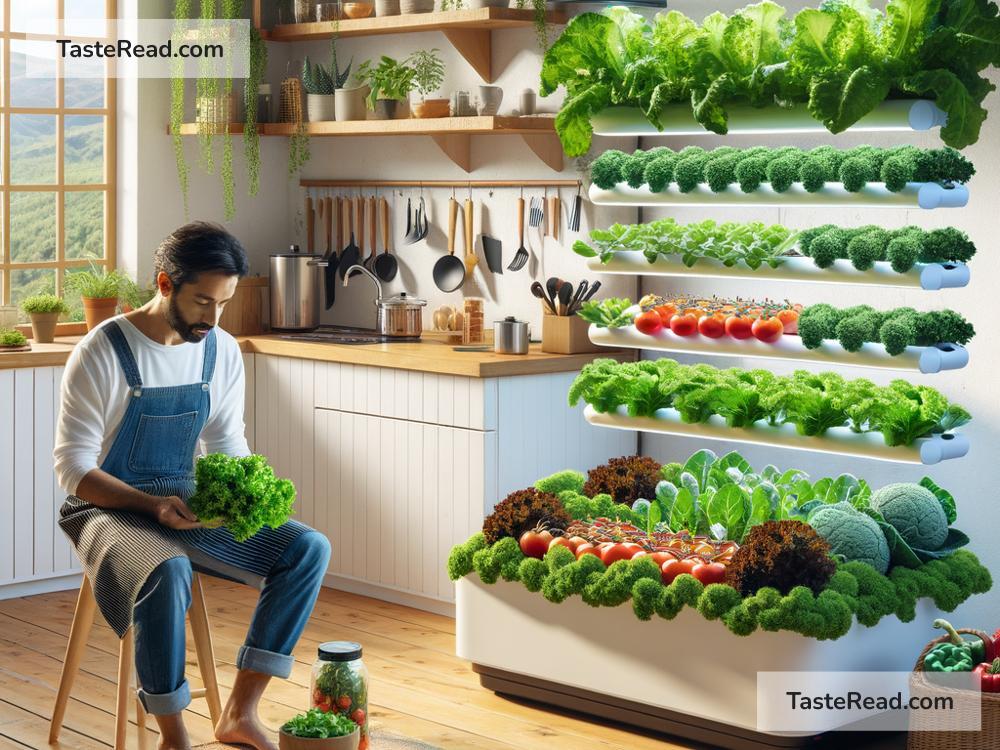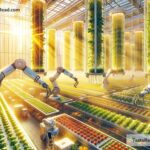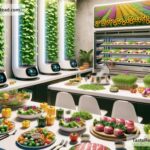The Future of Food and Sustainable Living
Imagine a world where fresh food is grown on rooftops, lab-made meat tastes just as good as the real thing, and every meal helps protect the planet. This might sound like science fiction, but it’s quickly becoming a reality. As we face challenges like climate change, growing populations, and dwindling natural resources, the way we produce and consume food must evolve. Sustainable living and innovative food solutions are key to creating a healthier future for people and the planet.
What Is Sustainable Living?
Sustainable living is about making choices that reduce harm to the environment and conserve resources for future generations. It means using less energy, wasting less, and finding smarter ways to live. When it comes to food, sustainability focuses on growing, producing, and distributing food in ways that are good for the planet and people. This involves reducing pollution, using fewer chemicals, cutting down on food waste, and supporting local farmers.
Why the Food System Needs to Change
Our current food system has a lot of problems. Farming uses large amounts of water, land, and energy, which can damage ecosystems and contribute to global warming. Meat production, in particular, generates massive amounts of greenhouse gases and requires huge quantities of resources like grain and water. At the same time, there are millions of people who don’t have enough to eat.
By 2050, the world’s population is expected to reach nearly 10 billion. If we keep producing food the same way, it will be impossible to feed everyone without harming the planet. That’s why scientists, farmers, and innovators are working on new ways to produce and enjoy food sustainably.
The Rise of Sustainable Food
The future of food includes exciting technologies and ideas that are already reshaping how food is grown and eaten.
1. Vertical Farming
Imagine farms stacked like buildings in the middle of cities. Vertical farming grows crops indoors using shelves or towers, where plants grow under LED lights in controlled environments. These farms use less water and no pesticides, and since they’re often located in cities, they can deliver fresh produce quickly without long transportation routes.
2. Lab-Grown Meat
Meat lovers don’t have to give up burgers to live sustainably. Scientists are developing lab-grown or “cultured” meat—meat made from animal cells but without the need to raise and slaughter animals. Producing lab-grown meat requires fewer resources and generates fewer emissions compared to traditional farming. In the future, it could become a common and cruelty-free way to enjoy meat.
3. Plant-Based Foods
Plant-based diets are on the rise, and food companies are creating amazing alternatives to traditional animal products. From oat milk to vegan cheese and tofu-based meat substitutes, the choices are endless. Eating more plants and fewer animal products is one of the easiest ways to reduce your carbon footprint.
4. Precision Agriculture
Farmers are using advanced technology like drones, sensors, and satellite data to make farming smarter and more sustainable. Precision agriculture allows farmers to monitor soil health, track animals, and use resources like water and fertilizer efficiently. This saves money, reduces waste, and ensures better harvests.
5. Alternative Proteins
Insects, algae, and mushrooms are becoming surprising sources of protein. Though it might sound unusual, insects like crickets are packed with nutrients and require far fewer resources to produce than meat. Similarly, algae and mushrooms can be turned into protein-rich foods that cater to consumers looking for sustainable options.
Living Sustainably at Home
You don’t need fancy technology to live more sustainably. Here are simple ways to make your home and lifestyle more eco-friendly:
- Grow Your Own Food: Plant herbs, vegetables, or fruits in your garden, on your balcony, or even indoors. This reduces packaging waste and carbon emissions from transporting food.
- Buy Local: Support local farmers by shopping at farmers’ markets or buying regional products. Locally-grown food often requires fewer resources to transport and is fresher.
- Reduce Food Waste: Plan meals to avoid leftovers, store food properly, and compost scraps. Food waste adds to landfill pollution, so saving every bit matters.
- Choose Plant-Based Meals: Even switching one or two meals a week to plant-based options can make a big difference for the environment.
- Conserve Energy: Cook with energy-efficient appliances, turn off lights when not in use, and use renewable energy sources where possible.
A Shared Responsibility
The future of food and sustainable living isn’t just about what farmers and scientists do—it’s about the choices all of us make every day. Small actions, like reducing waste, buying sustainably-produced items, and supporting innovations, can lead to big changes when millions of people get involved.
Governments and businesses also have a role to play. Policies that protect farmland, reduce emissions, and encourage sustainable practices can help ensure a better food system. Companies can invest in eco-friendly packaging, source ingredients responsibly, and reduce waste in production.
Looking Ahead
The future of food is bright and exciting, but it requires hard work and commitment from all of us. Vertical farming, lab-grown meats, and plant-based diets are revolutionizing the way we think about what’s on our plates. By embracing sustainable living, we can protect the planet, support healthier lifestyles, and ensure future generations enjoy fresh, nutritious food.
So whether you’re planting a garden, choosing a veggie burger, or learning about the latest technologies, every small step makes a difference. Together, we can shape a future where food is abundant, sustainable, and better for everyone.
The journey starts today—with every bite, choice, and action we take. Let’s embrace the future of food and sustainable living, one meal at a time.


